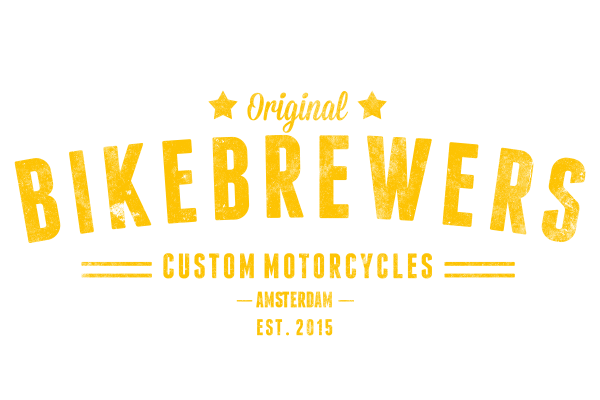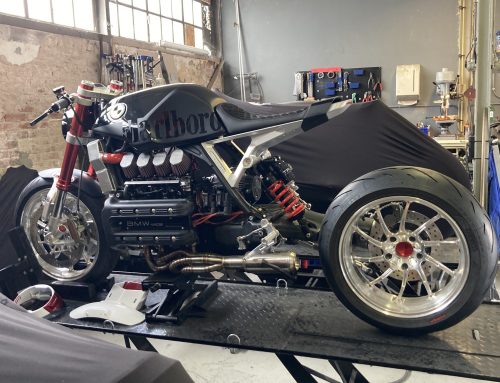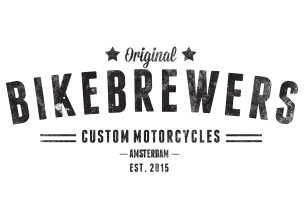
Intro & Ingredients
Once in a while, you strike gold! The motorcycle I’m writing about today made its first appearance in the wild at the Big Twin Show in Houten, the Netherlands, earlier this month. In our case, we got a bit (a lot) of a head’s up. I have been personally involved since a frame and a few crates of parts were inspected and, after a haggle and a handshake, collected. We have previously posted about a Blast from the Past, and about a Modern Interpretation of the famous concept. While often considered the first cafe racer and the heritage of custom builds, these bikes are now considered unicorns. They often find a home in a living room or a museum, rather than a garage. A few years ago, we were brave enough to call it “one of the most legendary machines out there”. What I am referring to is the ‘Triton’, a Triumph engine in a Norton frame. These bikes were built in the UK between 1950 and 1970, in various attempts to put the fastest engine into the best handling frame.
Here, I would like to present one built in the Netherlands, in 2022. The basic recipe for a classic Triton is relatively simple:
- Norton (Wideline) Featherbed frame – 1pc.
- Triumph Pre-Unit 650 twin engine – 1pc.
- Roadholder fork – 1pc.
Trying to source these main components is one thing, trying to make them fit each other and look good is another… Let’s get into it!
It’s all in the details
Georges Martin, inspired by Egli, built this particular frame and swingarm based on the Norton wideline featherbed measurements. He ingeniously routed an oil line inside the frame for the crankcase breather.

Piet from Land’s End Motorcycles in Hengstdijk, the Netherlands overhauled the 650cc 360° parallel twin engine. He increased the capacity to 750cc, plugged in matching pistons, and topped it off with a T140 head to convert to a pushover exhaust. Furthermore, he installed a belt-driven Bob Newby racing clutch to transfer all 55 horses to the Norton AMC transmission. Yes, that is the same Bob Newby who won several TTs in the 1980’s. All this mounts into the frame with waterjet cut 7075-T6 aluminium brackets. Piet also serviced the Roadholder forks and mated these to the frame. He further modified the frame to also fit the polished aluminium oil tank behind the engine and underneath the seat.

Rolling along
In the front, Haan Wheels in Schijndel laced a Grimeca 4 (!!!) leading shoe hub with stainless steel spokes and a 19″ Morad high shoulder rim. The 18” rear around a weight-reduced conical hub. Both were drum-polished to achieve that top shine finish. Bridgestone Battlax BT45 rubber ensures optimal contact to the road surface.



A touch of modern
Not all on this bike is a collection of old and refurbished parts from the Netherlands, Belgium, France, Germany, Austria, Italy, the UK, and the US.

If you look closely, the vintage Tommaselli Matador levers neighbour modern Motone CNC milled aluminium push button controls. This is one of the hints at what lies underneath the shine. When laying new wiring, one might as well go all the way and replace analog fuses and switches with a digital control unit. In this case, a MotoGadget mo.unit replaces all relays and fuses, and simultaneously simplifies the wiring. The pulse switches control the unit via a low current circuit, allowing for small diameter wires inside the clip-ons. The thicker wiring for 12 volt supply to the power draining components are thus no longer routed via the switches. Yes, I’m looking at you, H4 headlight!

The chrome headlight bucket also houses a digital voltmeter and LED indicator lights for the high beam, oil pressure, and the indicators. Bright as the sun, these tiny LED indicators are another hint at the high-tech core of the motorcycle. We concidered and accepted these modernisations, because the original manufacturer of Triumph and Norton lights, Lucas, is jokingly known as ‘the Prince of Darkness’.

When you are on the bike, you can clearly see the indicator lights and voltmeter when you peak between the original Smith’s tacho and speedo. Bob Carter in the US rebuilt these, since some things are best left to the experts.
Hand built
Behind these beautiful gauges sits la pièce de résistance, a handbuilt aluminium petrol tank. It subtly dips below the spine of the frame, yet perfectly aligns with knees where it narrows to meet the seat. Combined, the curvature of the tank and the seat play a large part in the aesthetic that stops people in their trot. They often utter something along the lines of “I have no idea what it is, but it’s beautiful”. The seat hump houses the lithium ion battery and control unit. Maarten, or Yellow Rider, Zevenaar, famous for converting Yamaha’s into vintage racers and board trackers, made it by hand, since the available humps did not follow this curvature. The broad silver band aligns with the metal strap that secures the tank. Seats are his specialty, and his craftsmanship shows!

One of the largest challenges with this build was to find parts that fit. And when you cannot find something, you fabricate it. There is a lot you can bolt on nowadays, almost all manufacturers offer parts to personalise your bike further. Aftermarket suppliers often go as far as offering various types of entire kits to convert your motorcycle. Just sometimes, your hand tools are not sufficient to fabricate the parts needed, and that’s when you call the cavalry.

Maarten also crafted the base plate and adapted the subframe hoop before it went to powder coating. RAL 6005 with a structured finish is a unique combination that is a tad lighter than the famous BRG. British Racing Green. It really makes the bike pop and sets it apart from that traditional black, chrome, red colour scheme. Finally, Maarten fabricated stainless steel actuator and anchor rods for the rear brake and gearbox, as well as the brackets for the Norton Peashooter exhausts.

Big (T)winner
At the show, we’re getting very curious about the sound. And with us, a few other people in the audience looked at the cafe racer category winner at the Big Twin Bike Show with great anticipation and hope. Luckily, after tickling the Amal 930 carbs, a firm kick draws in the air via DNA filters, the Beck electronic ignition generates a spark, and the parallel twin roars. Just a tad louder than the crowd ;)

Um cassino on-line que oferece acesso a uma variedade de jogos de azar, incluindo caça-níqueis, roleta, pôquer e muito mais emhttps://betandreas.br.com/
Photo credit: Jan Eggink Photography




